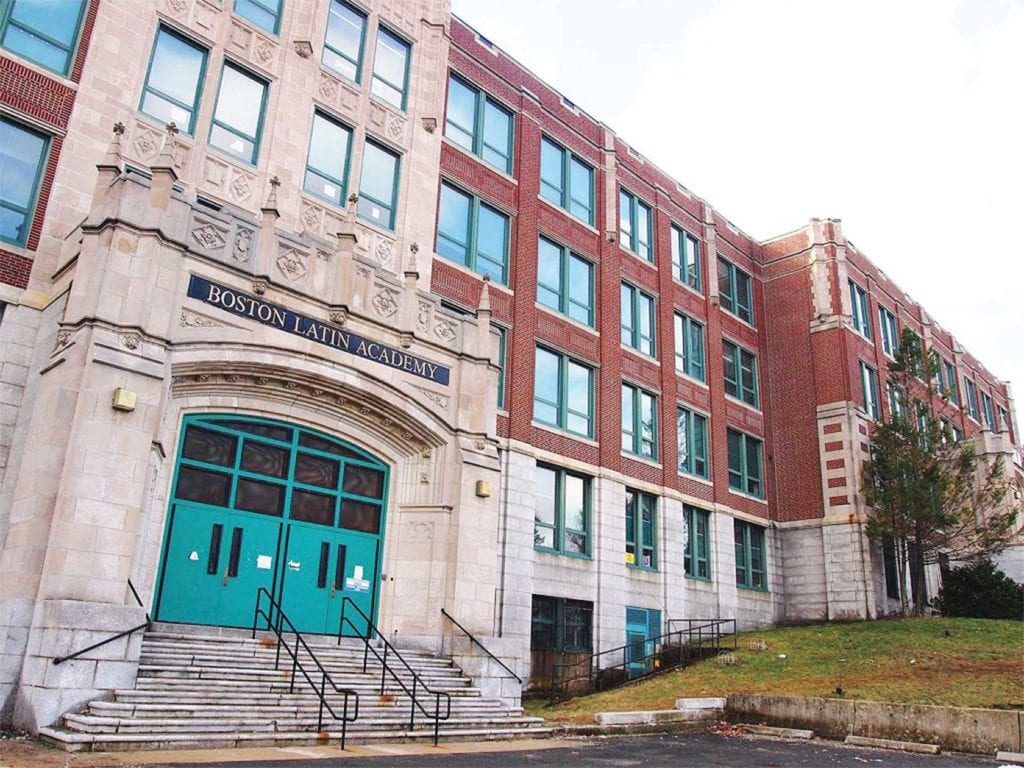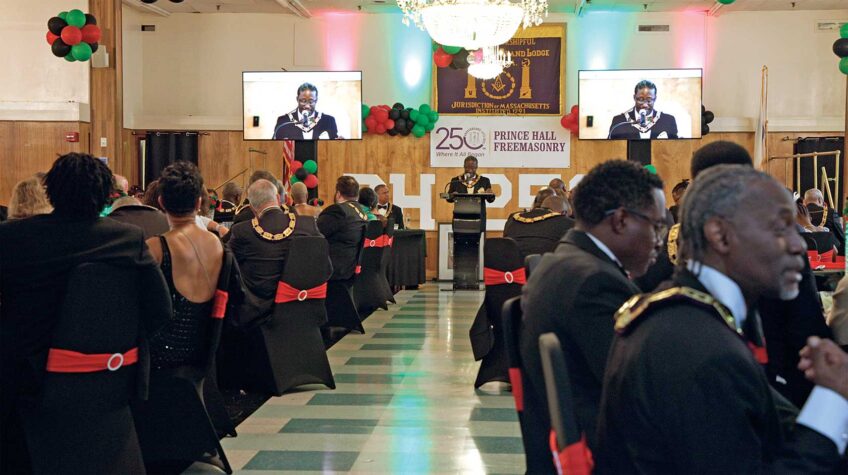
When Boston Latin Academy received a $1 million donation in 2019 from alumnus and Airbnb co-founder Nathan Blecharczyk, the gift came with a pledge to match up to $1 million more in fundraising: a challenge that alumni and members of the school community seemed eager to take on.
Two school associations — one representing Girls’ Latin School alumnae and Boston Latin Academy alums and another representing BLA parents — agreed verbally in March 2020 to merge and better pool resources for fundraising.
But by the time the BLA/GLS board met on Dec. 8 to elect new members, the unity the two groups had forged seemed irreparably broken. According to several of those who participated in the meeting, held via Zoom, the meeting was limited to 100 people, the chat function was disabled and everyone but the six board members who were Girls’ Latin School alumnae were muted. With no communication from outside the small cadre of GLS members, six new board members were elected, all white and all GLS alumnae.
The development has many in the school community concerned.
“I’ve been trying to understand why, in 2021, a group of older women who graduated from Girls’ Latin want the school to remain Girls’ Latin 45 years after it stopped being Girls’ Latin,” said Crystal Haynes, who graduated from a newly-coeducational BLA in 1975. “It sounds a lot like ‘Make America great again.’”
When Girls’ Latin School was founded in 1877, it was seen as a counterpart to Boston Latin School, which only accepted boys. Like the boys’ school, Girls’ Latin offered training in the classics and was seen as a college preparatory school, educating students from 7th to 12th grades.
When Boston Latin School went co-ed in 1972, so too did Girls’ Latin, becoming Boston Latin Academy. The first class with boys in it graduated from BLA in 1977.
Michael Maguire, a BLA alum who ran for a board seat in December, said the board of the alumni associations agreed that the 12 members of the merged entity’s board would be evenly split between BLA members, GLS members and parents. The fact that the board has ended up all GLS members doesn’t sit well with many of the school’s alums.
“It’s not a good look in this era for an organization that proports to support one of the most diverse schools in the commonwealth with a board that is not diverse,” said Anne Sandstrom, a class of ’72 graduate from GLS and former alumni association board member. “There are only a small handful of classes represented on this board. There’s been a lot of frustration around that.”
Former BLA/GLS board members and alums interviewed by the Banner characterized the GLS alumnae who ran the December meeting as an insular group who have run their association for the last 15 years. Some of the GLS alumnae appear to resent the fact that the school went coeducational in 1972, the BLA alums say.
Haynes, who was part of one of the last all-girls classes to graduate from the school, says she appreciates the school’s current diversity. In her 1977 class of 300, she was one of just 13 Black students.
“We were told we were the largest number of African American students to graduate in a class,” she said.
Today, Boston Latin Academy is among the more integrated schools in the city, with a student body that is 21% Black, 26% Latino, 19% Asian and 30% white.
While the unified board was meant to reflect today’s diversity at BLA, Haynes and others said a fracture occurred in August of 2020 when the former president of the Girls’ Latin School Alumnae association, Karen Curran, put a post on her Facebook page that was critical of Black athletes taking a knee during the national anthem. The post caused an uproar. Members of the parent group and BLA alums demanded she meet with them. Curran wrote a Sept. 4 Facebook post stating that she had resigned from the board.
But during a September 21 board meeting, members included Curran as president of the board in their notes and voted not to go ahead with the merger with the BLA parents association.
Curran declined to answer questions for this story.
BLA alums interviewed by the Banner said that they nominated 17 BLA alums for seats on the association’s board, but the six GLS members who ran the meeting only considered two for board seats, both of whom were white. In the end, the GLS grads did not cast a single vote for either.
The election, which has resulted in a board that is all-white and all GLS graduates, has Haynes wondering why such a group is seeking to control a school association that is raising funds for a student body that is now 41% male and 70% students of color.
“The Girls’ Latin alumnae want to do fundraising for a school they don’t respect,” she said.
Sellstrom says she and other GLS and BLA alums and parents are continuing to communicate with each other via Facebook groups and other means, in the hopes that the merger will eventually go through.
“I’m hoping something positive will ultimately come from all this,” she said. “But it’s been a painful process.”







